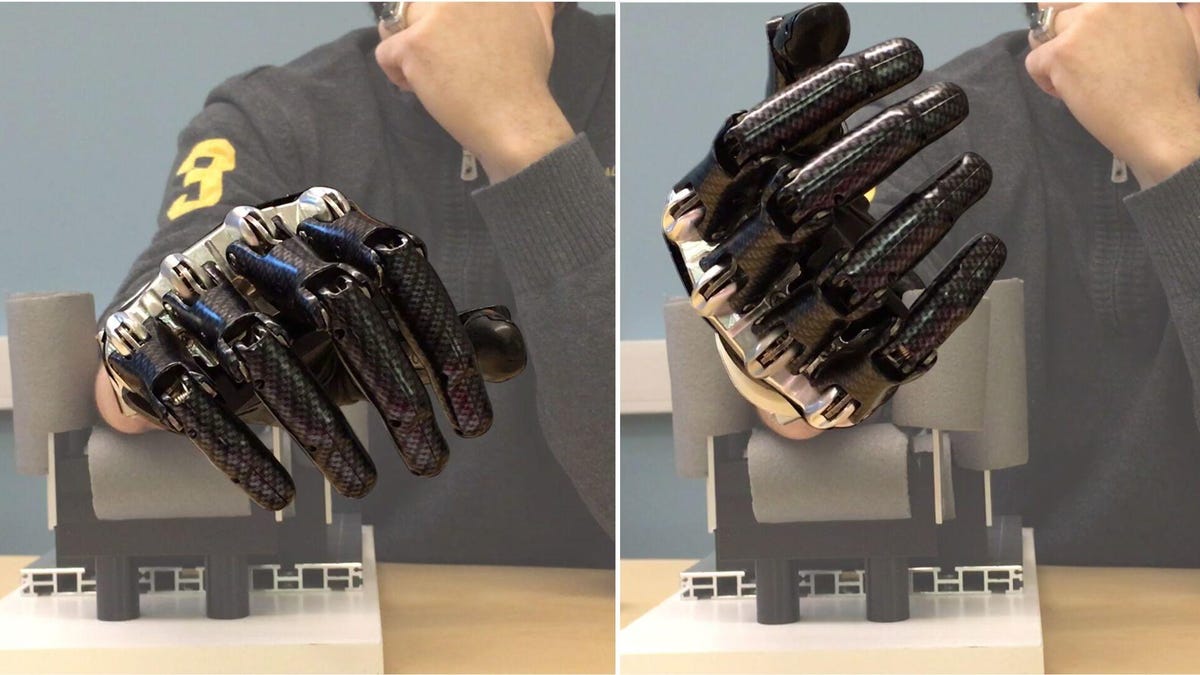This artificial joint lets amputees do more natural wrist-like movements
It also gives wearers a sense of touch.

This artificial joint can improve the range of movement for forearm amputees.
A new artificial joint is restoring a basic function for amputees: wrist movement.
The joint, developed as part of a project by researchers at Chalmers University of Technology in Sweden and prosthetic company Integrum AB, lets amputees make more natural movements, like rotating their wrist to open a door or turn over a piece of paper. Research on the artificial joint was published earlier this month.
People with forearm amputations can currently use a motorized wrist rotator that's controlled using electrical signals from their remaining muscles. But those same signals are also used to control the prosthetic hand, meaning people can't activate the wrist and the hand at the same time. In addition, a lack of sensory feedback means users aren't able to feel the hand's position or movement.
"Our new device offers a much more natural range of movement, minimising the need for compensatory movements of the shoulder or torso, which could dramatically improve the day to day lives of many forearm amputees," said Irene Boni, a visiting international student who worked on the project.
An implant is placed into each of the two bones of the forearm -- the ulna and radius -- and then a wrist-like artificial joint acts as an interface between these two implants and the prosthetic hand.
The artificial wrist joint works using osseointegration, which connects a prosthesis to the skeleton. An implant is placed into two bones of the forearm -- the ulna and radius -- and a "wrist-like artificial joint" serves as an interface between the two implants and the prosthetic hand. This allows for more natural movements and lets the wearer have intuitive control and sensory feedback.
Technology is ushering in innovations to help amputees carry out basic functions more naturally and effectively. Awkward, unfeeling artificial limbs are morphing into mind-controlled prostheses that offer sensory feedback and a wider range of motion. The Modular Prosthetic Limb from Johns Hopkins University promises to deliver thought-controlled dexterity and sensation, and Icelandic company Ossur is also developing mind-controlled leg and foot prostheses.

